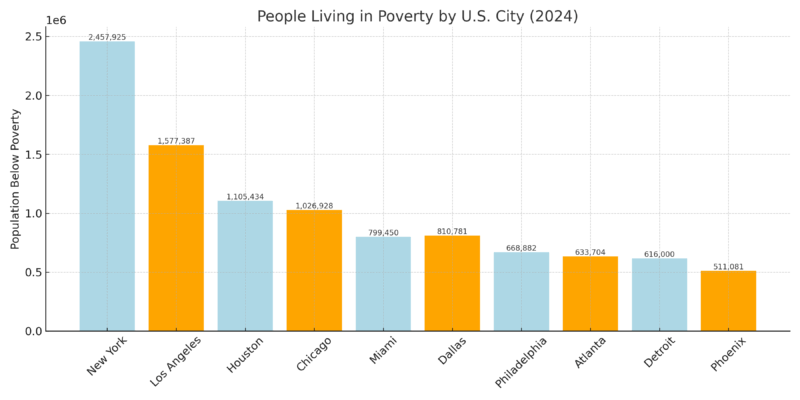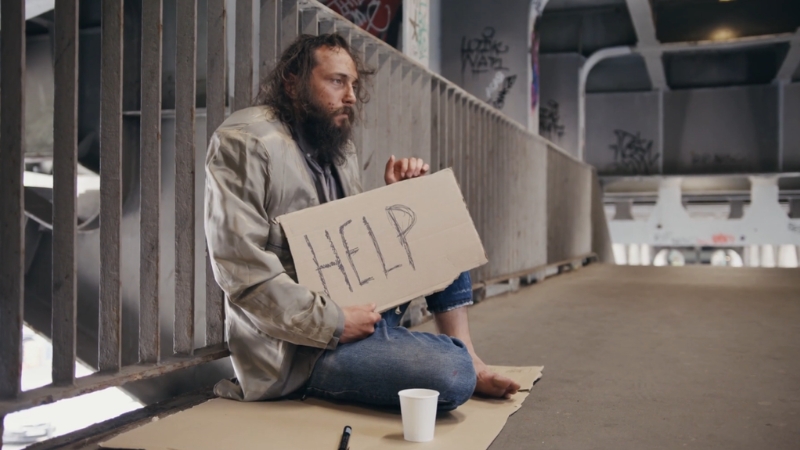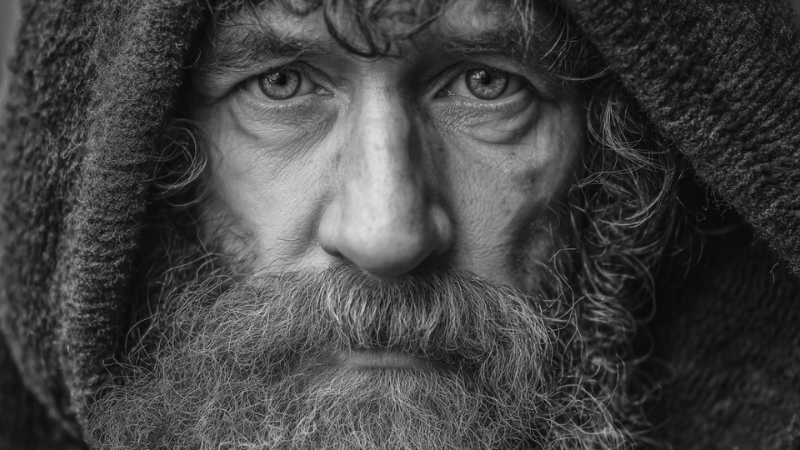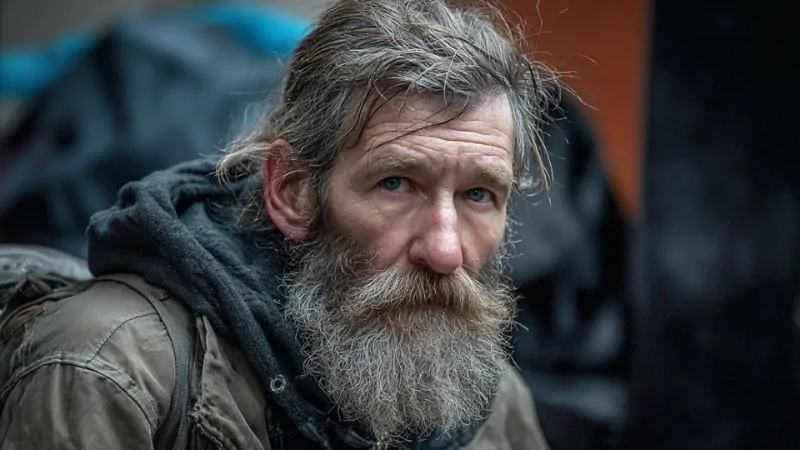In 2025, poverty in major U.S. cities has reached its highest levels in over a decade. Rising rents, stagnant wages, and the expiration of pandemic-era relief have pushed millions into financial distress.
The crisis is not confined to one region; it stretches from New York’s overcrowded boroughs to Houston’s expanding suburbs.
At the same time, homelessness has climbed to historic highs, with over 771,000 Americans lacking stable housing on any given night in 2024.
In cities like Los Angeles, San Francisco, and New York, encampments and emergency shelters are now a permanent feature of the urban landscape.
Poverty by Metro Area: The 10 U.S. Cities with the Most People in Poverty
The table below shows the latest figures from the U.S. Census Bureau, capturing both the absolute number of residents living below the poverty line and the share of the population affected.

What These Numbers Reveal
The data tells a clear story about the economic divide in America’s urban centers.
New York City tops the list with nearly 2.5 million people living in poverty. That’s about one in eight New Yorkers, and it reflects both sky-high housing costs and limited affordable options. Even middle-income earners face rent burdens exceeding 50% of their income.
Los Angeles comes next with 1.6 million residents below the poverty line. Despite its global wealth and innovation industries, Los Angeles also has one of the largest unsheltered homeless populations in the world, according to Econfact. In 2025, about 72,000 people were reported unhoused in L.A. County, a figure only slightly improved from 2023.
Houston, ranking third, reveals a different side of poverty: employment without stability. The city’s poverty rate is 14%, one of the highest among large metros. Many Houston families have at least one working adult, but still rely on food banks and public assistance.
In Chicago, over 1 million residents live in poverty, reflecting long-standing segregation and income inequality. Miami follows closely, where high inflation and soaring housing prices have pushed poverty back to pre-pandemic levels.
Further down the list, Detroit continues to face structural unemployment and population loss. Although its numbers have declined from their peak a decade ago, 14% of residents still live in poverty. Phoenix and Atlanta, both rapidly growing metros, highlight that population growth alone does not solve inequality; both cities report poverty rates near 10%.
A Nationwide Crisis of Housing and Survival

The federal poverty threshold in 2024 was $16,320 for a single person, and $33,562 for a family of four. Yet in every major metro area, the income required for basic survival is multiple times higher.
According to MIT’s Living Wage Calculator, a single adult in Los Angeles now needs about $46,000 per year just to cover rent, food, and transportation, nearly three times the poverty line.
This mismatch between official poverty definitions and real urban living costs means the true scale of hardship is far greater than federal data suggests. Many families technically above the poverty threshold are still one emergency away from eviction or hunger.
Homelessness follows naturally from this imbalance. In 2024, the U.S. Department of Housing and Urban Development (HUD) recorded 771,480 people experiencing homelessness, an 18% increase year-over-year, the steepest rise in modern history.
Homelessness Hotspots in Context
While the largest numbers of people in poverty are concentrated in New York and Los Angeles, homelessness shows a different pattern.
Cities with extreme housing scarcity and high costs, such as San Francisco, Oakland, and Seattle, have the highest rates of unsheltered homelessness, meaning most homeless individuals live on the streets rather than in shelters.
State / Region
Estimated Homeless Population (2024)
Unsheltered Share (%)
California
187,100
68
New York
156,000
5
Florida
30,700
54
Washington
29,000
66
Texas
27,300
52
California alone accounts for nearly one in four homeless Americans, a statistic that reflects both the depth of its affordability crisis and the state’s limited shelter capacity.
Key Drivers of the Crisis

1. Housing Costs Outpacing Incomes
In nearly all major metros, rental prices rose faster than wages from 2021–2024. Even modest apartments in Los Angeles or New York now rent for over $2,500 per month, far beyond the means of many low-income workers.
2. Expiration of COVID-Era Relief
Programs like eviction moratoria, stimulus payments, and expanded child tax credits temporarily cut poverty to record lows in 2021–2022. When these expired, millions fell back into hardship.
3. Inflation and Rising Living Costs
From 2021 to 2024, the Consumer Price Index rose by roughly 17%, hitting food, utilities, and rent hardest. Low-income households, which spend most of their income on essentials, bore the brunt.
4. Homeless Services Overload
Emergency shelters and social service systems are stretched beyond capacity. Cities like New York and Chicago report backlogs in housing placement that can exceed six months.
Structural Solutions Under Discussion
Experts across government and academia point to several strategies:
Final Outlook
@awellmadewoman #creatorsearchinsights #fypシ゚viral #foryou #fyp #fypシ #poverty #usa #rto #employees #careertok #thisisamerica #fypage #inflation #concretejungle #america #smh #worldtiktok #blacktiktok #2025 ♬ original sound – The Corporate Clapback
The picture of poverty in U.S. cities in 2025 is stark but not unsolvable. Nearly every metro area is confronting the same cycle: high costs, stagnant wages, and growing homelessness.
New York and Los Angeles illustrate the extremes, dense populations, unaffordable rents, and visible inequality, but Houston, Detroit, and Miami prove that even lower-cost cities are far from immune.
Unless housing affordability and wage growth are addressed together, the United States will continue to see urban poverty deepen year after year.
Related Posts:
- Number of Federal Employees of US in 2025 - How Many…
- 15% of People Live Near Coasts – And the Number Keeps Rising
- Living Alone in Your 70s or 80s - Is It Worth the Risk
- New Orleans Population 2025 - Current Data and…
- Utah Population Overview 2025 - Growth,…
- How Many People Are Working in the Health Industry…








